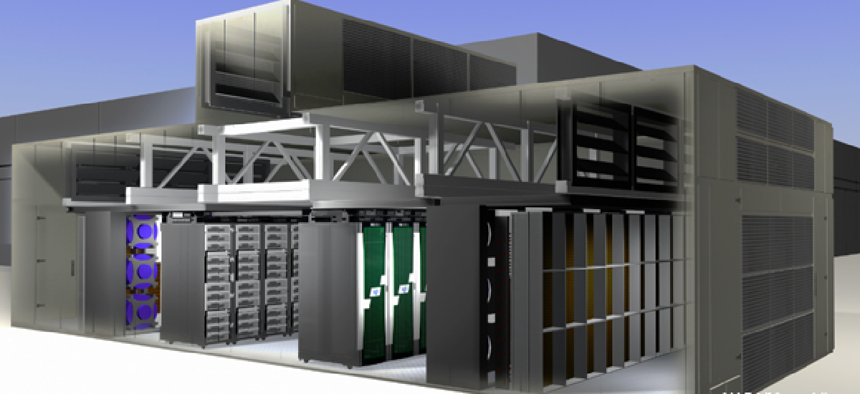Modular supercomputers: Smaller environmental footprint, greater flexibility


Connecting state and local government leaders
NASA’s new Modular Supercomputing Facility will save money, conserve water and give the space agency scalable high-performance computing.
The same modular technology used to reduce cooling costs in data centers is now being fielded in supercomputers.
NASA’s Modular Supercomputing Facility, announced in 2015 and now operational, will save more than a million gallons of water a year by using a system that cools down the San Francisco Bay Area’s already-mild air before sending it to cool computer racks of the 1.2-petaflop Electra system, the space agency said.
Electra housed in a self-contained, energy-efficient module outside of the main NASA Advanced Supercomputing (NAS) facility. This modular design promises to not only reduce the amount of water and electrical resources needed to cool the systems, but it will give NASA flexibility in expanding its high-performance computing capacity. New modules can be acquired and integrated over time, providing more compute resources as they are needed, NASA said in its project description.
The fans in the facility that control the airflow around the Electra supercomputer use less than 10 percent of the electrical energy used in mechanical refrigeration of other supercomputers This more efficient cooling will reduce annual water evaporation by over 99 percent.
With the new facility, NASA is expecting to save about 1,300,000 gallons of water and a million kilowatt-hours of energy each year.
While one benefit of the water-saving Electra is the smaller environmental footprint -- especially important in California, which has been beset by drought for years now -- another upside is the cost savings.
This design can “save about $35 million -- about half the cost of building another big facility,” said Bill Thigpen, chief of the Advanced Computing Branch at NASA Ames’ NAS facility. NASA is already considering an expansion of Electra of up to 16 times its current capacity to keep up with the requests for supercomputing time from NASA researchers.
“One of NASA’s key science goals is to expand our knowledge of Earth systems,” Thigpen said. “So we have a responsibility to do our part to lessen the impact of our technologies on the environment over the long term.”
NEXT STORY: Four horsemen of fed IT slowing cloud adoption




